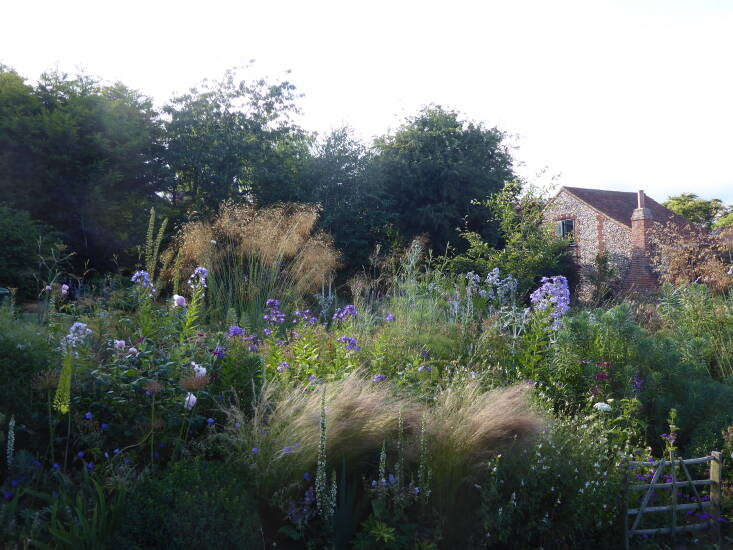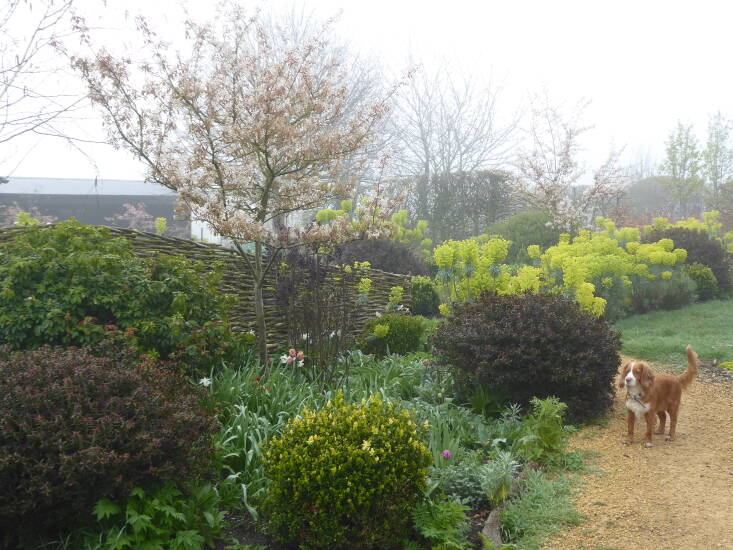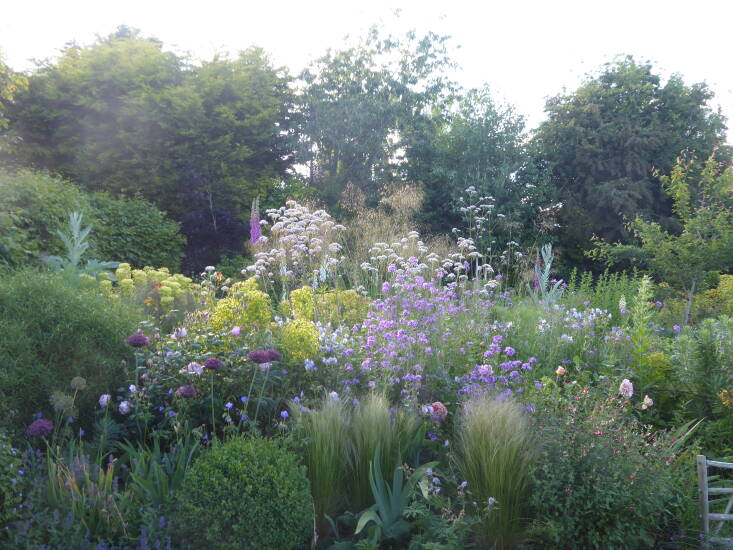You’d think choosing plants was easy enough—just find the ones you like, right? And for single specimens in a pot or a monoculture of, say. roses or hydrangeas, it is as simple as that.
But what about designing a border where plants need to relate to each other in a well-thought-out design? And what if you have a large blank canvas to fill with a whole range of plants. This is when it can get a little more complicated. For the third post in my column on creating A Garden From Scratch, I tackle how to figure out the kind of plants you might want in your landscape. Before you get too excited, let me clarify that I’m not talking about choosing specific plants here; this is about the bigger, long-term picture of how to put plants together in a space and why.
(To read my earlier stories in the Garden from Scratch series, go here, then here.)
Photography by Clare Coulson.

1. Get trees in first.

Planting design is about a series of layers, from the woody plants, including trees and climbers, to the shrubs, herbaceous perennials, biennials, and annuals. Most gardens will have a mix of all of these types of plants to create a succession of interest throughout the year, and a balance of structural plants that will provide a backdrop to herbaceous plants that will flower and die back.
It’s logical to begin with the trees since they generally need the most time to mature. They are also arguably the most important thing to get right, being the least ephemeral. Incorporating some trees, or even a single specimen, can instantly ground a space, bringing strong structure, height, and impact—as well as, in many cases, year-round interest. For this same reason think very carefully before removing any mature trees or shrubs from an inherited space.
It’s the one place perhaps where it’s worth spending some money to buy something really beautiful—a trio of Amelanchier or Prunus multi-stem or specimen trees, for example, may feel like a big investment, but it will have instant impact, as well as blossoms in spring, lush foliage through summer, and then great leaf color later in the year. In winter its form has its own allure. Tip: Buy young trees—they are far more economical and will usually settle in faster than mature specimens. Buying bareroot plants also helps to keep down costs.
2. Invest in evergreens.

Another worthwhile investment: evergreen forms that will provide four-season structure. Boxwood would have ticked all the boxes, but now that these are under the dual threat of box blight and box caterpillar, few gardeners would take a risk with them. There are plenty of alternatives—yew, Ilex crenata, many pittosporums, rosemary, hebes, daphnes can all be grown into shapes that will provide permanent year-round forms and act as a foil to herbaceous plants. Deciduous plants like beech and hornbeam can also provide structure, too. (See Landscaping 101: Boxed in by Boxwood? 5 Shrubs to Try Instead.)

